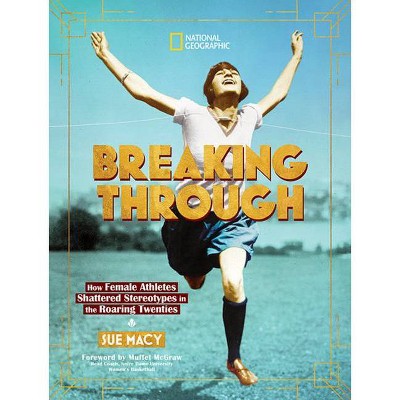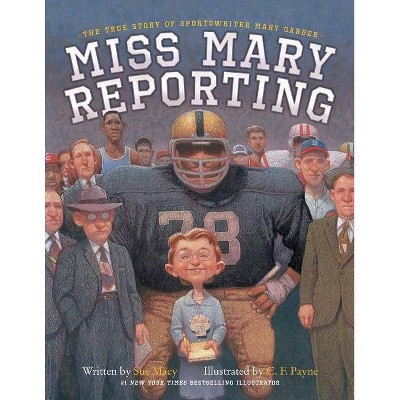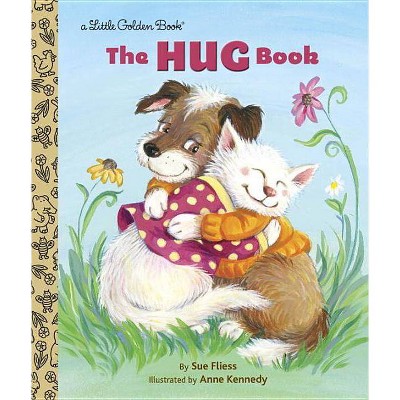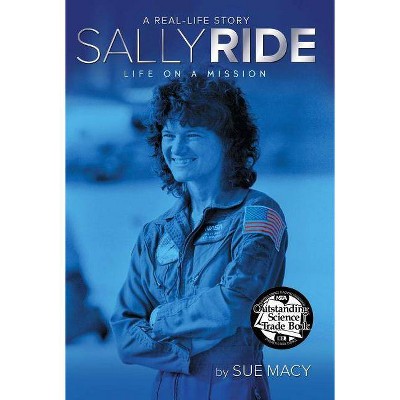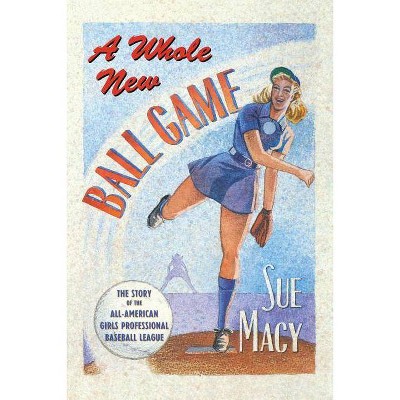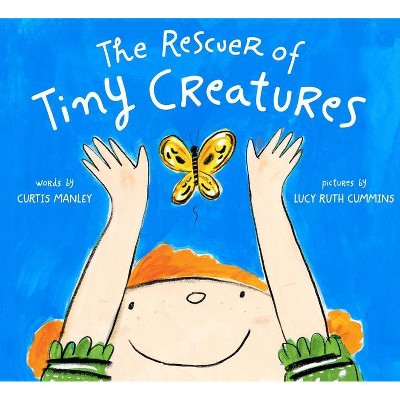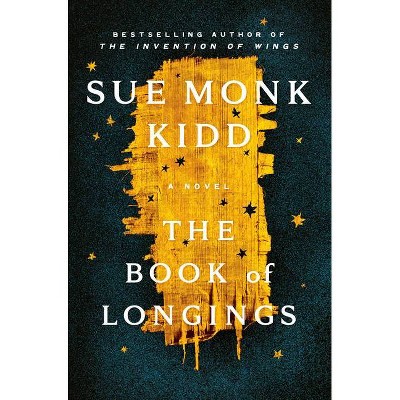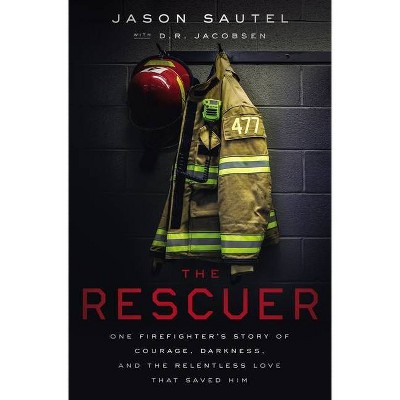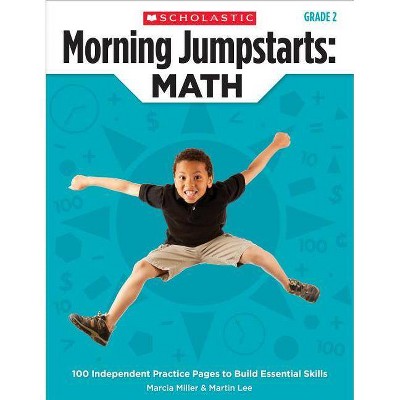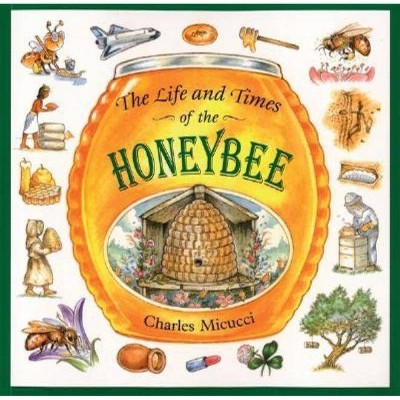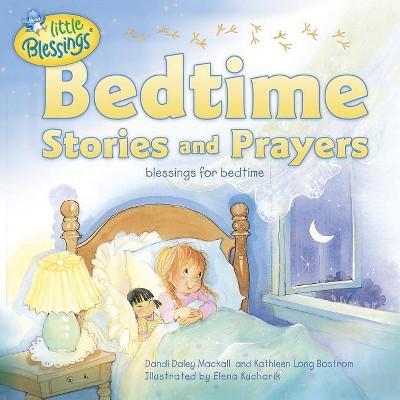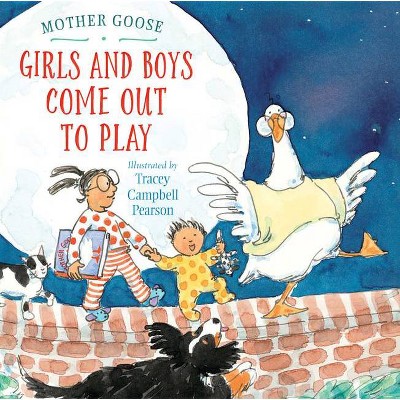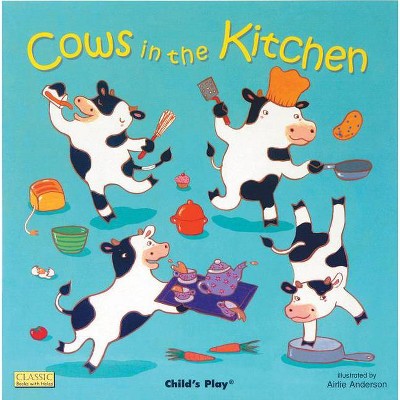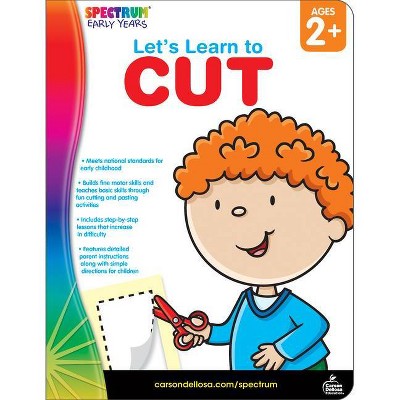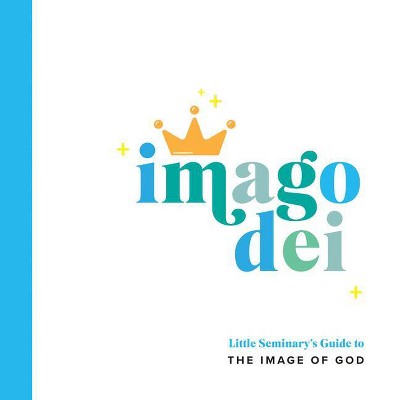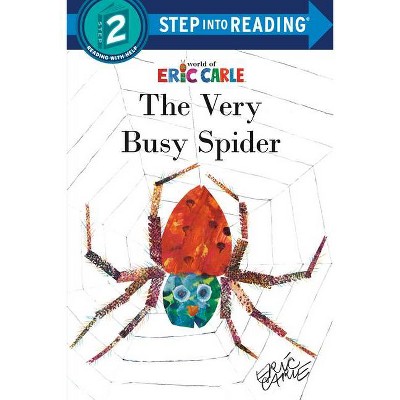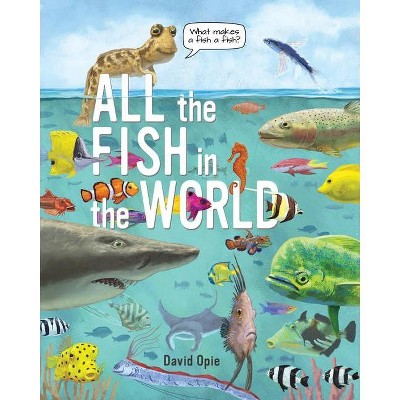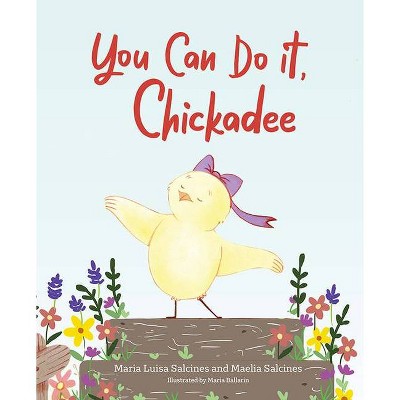The Book Rescuer - by Sue Macy (Hardcover)
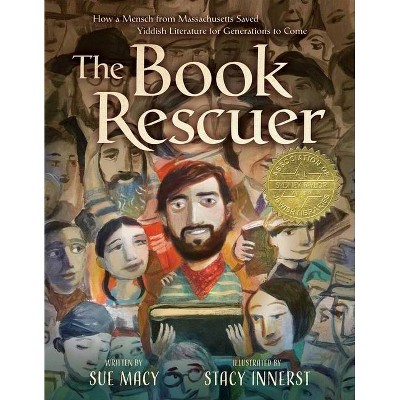
Similar Products
Products of same category from the store
AllProduct info
<p/><br></br><p><b> About the Book </b></p></br></br>"Over the last forty years, Aaron Lansky has jumped into dumpsters, rummaged around musty basements, and crawled through cramped attics. He did all of this in pursuit of a particular kind of treasure, and he's found plenty. Lansky's treasure was any book written Yiddish, the language of generations of European Jews. When he started looking for Yiddish books, experts estimated there might be about 70,000 still in existence. Since then, the MacArthur Genius Grant recipient has collected close to 1.5 million books, and he's finding more every day"--<p/><br></br><p><b> Book Synopsis </b></p></br></br><b>Recipient of a Sydney Taylor Book Award for Younger Readers</b><br> <b>An ALA Notable Book</b><br> <b>A Bank Street Best Book of the Year</b> <p/><b>"Text and illustration meld beautifully." --<i>The New York Times</i></b><br> <b>"Stunning." --<i>Kirkus Reviews</i> (starred review)</b><br> <b>"</b><b>Inspired...[a] journalistic, propulsive narrative.</b><b>"</b><b> --<i>Publishers Weekly</i> (starred review)</b><br> <b>"The story comes alive through the bold acrylic and gouache art." --<i>Booklist</i> (starred review)</b> <p/><b>From <i>New York Times</i> Best Illustrated Book artist Stacy Innerst and author Sue Macy comes a story of one man's heroic effort to save the world's Yiddish books in their Sydney Taylor Book Award-winning masterpiece.</b> <p/>Over the last forty years, Aaron Lansky has jumped into dumpsters, rummaged around musty basements, and crawled through cramped attics. He did all of this in pursuit of a particular kind of treasure, and he's found plenty. Lansky's treasure was any book written Yiddish, the language of generations of European Jews. When he started looking for Yiddish books, experts estimated there might be about 70,000 still in existence. Since then, the MacArthur Genius Grant recipient has collected close to 1.5 million books, and he's finding more every day. <p/>Told in a folkloric voice reminiscent of Patricia Polacco, this story celebrates the power of an individual to preserve history and culture, while exploring timely themes of identity and immigration.<p/><br></br><p><b> Review Quotes </b></p></br></br><br><i>The Book Rescuer</i> is both informational and inspiring, explaining to young readers how one imaginative American Jew named Aaron Lansky determined that he would rescue the Yiddish language and make it a living testament to the dwindling culture of millions of European Jews. Lansky's combination of persistence and innovative thinking allowed him to carry the remnants of a culture and language, from basements and dumpsters to an outstanding research institution built to house them and open their pages to the world. <p/>Macy begins her narrative by inviting the reader to ?"Kum aher. Sit down. I want to tell you a story." At first, it may seem as if romanticized family memories will predominate as we learn that Lansky's immigrant grandmother was told by her brother to toss her suitcase full of useless items from the past into the Hudson River. It soon becomes clear that this poignant anecdote is only the beginning, as the woman's grandson retrieves the culture lost in that suitcase; Macy and Innerst emphasize the ordinary nature of this ?"all-American boy" growing up in a small Massachusetts town. Although the cultural relics depicted in Innerst's portrait may be dated the vision of childhood as a time of unlimited curiosity is not. Soon Aaron's love of reading and sense of connection to his family's past becomes a consuming passion. <p/>Children will identify with the obstacles which Lansky confronts in the form of skeptical establishment figures who have little patience for his mission. When he calls on ?"the leaders of the biggest Jewish organizations in the country" to warn them that Yiddish books are being tossed in the trash by those who no longer see a use for them, the response he receives would discourage anyone less focused. <p/>Innerst describes in an ?"Illustrator's Note" how the influence of Chagall helped him bring Jewish culture to life. Some of the book's scenes are direct homages to that artist while others represent a subtle response to his vision. One incredible two-page spread shows a stylized model of the Jewish world in all its multiple settings, from shtetl buildings to the palm trees of the Middle East. The ?"ground" on which these features stand is a collage of pages filled with Yiddish print, forming a foundation for the world above it. Innerst's artwork is a complex interplay of Chagall's world and that of late twentieth-century America. He captures the transition between generations, as the book collector's tremendous energy meets the quiet dignity of older Jews ready to pass on their tradition. One picture shows two elderly hands giving a Yiddish book to Lansky's youthful ones; the book is entitled symbolically <i>chai</i> (life). The silence of this image is followed by a much different one, featuring the vibrant activity in the Yiddish Book Center where Lansky's dream has become a reality. <p/><i>The Book Rescuer </i>is highly recommended not only for children but for older readers who are inspired by the revival of Yiddish culture, as well. It includes an ?"Afterword" by Aaron Lansky, an ?"Author's Note," an ?"Illustrator's Note," a Yiddish glossary, and a list of additional sources.--Jewish Book Council<br><br>"Kum aher. Sit down. I want to tell you a story." With a storyteller's cadence, Macy (Miss Mary Reporting, rev. 1/16; Trudy's Big Swim, rev. 7/17) explains how Aaron Lansky came to collect the thousands of books now housed in the Yiddish Book Center in Amherst, Massachusetts. Through an anecdote from Lansky's family history as well as a brief historical overview of why the number of Yiddish speakers has dwindled, Macy gives context to Lansky's difficulty in finding Yiddish novels for his college studies. That difficulty led him to collect books first for his own purposes, then for the Center (which he founded) starting in 1980. Stories of how he obtained them--meetings "over tea and cake and lokshn kugl" with older Jews; a late-night dash to a dumpster--lend both human interest and a sense of urgency to the mission. Innerst's (The Beatles Were Fab (and They Were Funny), rev. 5/13) painterly illustrations (in acrylic and gouache, with fabric textures rendered digitally, and, according to an illustrator's note, inspired by Marc Chagall), give readers plenty to peruse, with sprinkled Yiddish words and visual references to Jewish history and culture. Detailed back matter also includes notes from Lansky and Macy, a glossary, further resources, and source notes. shoshana flax--Horn Book "November 1, 2019"<br><br>MACY, Sue. The Book Rescuer: How a Mensch from Massachusetts Saved Yiddish Literature for Generations to Come. illus. by Stacy Innerst. 48p. glossary. S. & S./Paula Wiseman Bks. Oct. 2019. Tr $17.99. ISBN 9781481472203. <p/> Gr 1-4-Aaron Lansky could not forget what his grandmother told him as a child. At the age of 16, she immigrated to the United States from Eastern Europe. In his twenties, Lansky decided to find out more about his grandmother's stories, which set him on a journey to learn how to speak and read Yiddish and to also locate Yiddish books. The result is the Yiddish Book Center in Amherst, MA. Lansky's story is a fascinating one, filled with book rescues and meeting older people who not only treasure books but what they represent. His disappointments and rewards in pursuing this passion are well portrayed. The narrative is both informative and engaging and includes Yiddish words, many of which have been incorporated into English. All appear in a glossary. An afterword by Lansky himself brings the Center and his work up to date. Illustrations intentionally call to mind the bold line and semi-abstraction of Russian-born artist Marc Chagall. VERDICT A potentially valuable addition to both school and public libraries as well as Jewish schools. Echoing Carole Boston Weatherford's Schomburg: The Man Who Built a Library, the book's narrative shows that pursuing interests can lead to meaningful and long-lasting results.-Maria B. Salvadore, formerly at District of Columbia Public Library--School Library Journal "September 2019"<br><br>One young man seeks out a unique collection of Yiddish books to preserve them and their lost world.Growing up, Aaron Lansky remembered the story of his grandmother's immigration to America. She had just one worn suitcase, filled with books in Yiddish and Sabbath candlesticks--which her brother tossed into the water upon greeting her. It was of the Old World, and she was in the New World. Lansky loved reading but realized that to pursue his interest in Jewish literature he would have to study Yiddish, his grandmother's language. His search for books in Yiddish led to one rabbi about to bury a pile, which led to years of rescuing books from dumpsters and then building a depository for them and for the thousands of subsequent donations. Lansky visited many of the donors and heard their emotional stories. Now a well-established resource in Amherst, Massachusetts, his Yiddish Book Center is digitized, with free downloads, and conducts educational programs. Macy's text beautifully and dramatically tells this story while noting the powerful influence of Yiddish writing in the lives of Jews. Innerst's acrylic and gouache artwork, with the addition of digitized fabric textures, is stunning in its homage to Marc Chagall and its evocation of an Eastern European world that has physically vanished but is alive in these pages of beautifully realized imagery.For lovers of books and libraries. (afterword by Lansky, author's note, illustrator's note, Yiddish glossary, further resources, source notes, photographs) (Picture book/biography. 7-10)--Kirkus Reviews *STARRED* "July 15, 2019"<br><br>Text and illustration meld beautifully in Sue Macy and Stacy Innerst's <b>THE BOOK RESCUER: How a Mensch from Massachusetts Saved Yiddish Literature for Generations to Come, </b> the story of a lesser-known hero, Aaron Lansky. A MacArthur Genius Grant recipient and the founder of the Yiddish Book Center, he almost singlehandedly saved Yiddish books in America at a time when Yiddish was considered a langguage "whose time had passed." When he started rescuing books from Dumpsters, it was thought there were maybe 70,000 Yiddish books left; his team has now saved 1.5 million. <p/>Macy, who has written books about women's history and sports, knows how to start a tale: "<i>Kum aher</i>. Sit down. I want to tell you a story." In these luminescent pages, an "All-American boy" grows into a man in love with a language considered dead. The text is sprinkled with Yiddish ("Aaron could have plotzed! Destroying Yiddish books was like erasing Jewish history!") without getting Catskills-y. <p/>Innerst's acrylic, gouache and digital art shares the book's gentle humor: Little Aaron was a Star Trek fan, and images of Leonard Nimoy (a Yiddish-speaker himself) as Spock sneakily appear, like a pointy-eared Waldo, throughout the book. A cheerful spread strews around Yiddish words that have entered the vernacular ("klutz," "bagel," "glitch"). In another, little Aaron and hippie collegiate Aaron are each surrounded by washes of warm reds and pinks and flying rings of books forming a subtle infinity sign.--The New York Times "12/5/2019"<br><br>This inspired pairing of two top picture book biographers tells the story of Aaron Lansky, an "all-American boy" (a <i>Star Trek</i> poster decorates his bedroom) who in college became convinced that Yiddish books represented the "portable homeland" of the Jewish people. With Yiddish dying out after the Holocaust and little mainstream support ("Yiddish was a language whose time had passed"), Lansky learned the language, then began saving Yiddish books any way he could. He pulled nearly 5,000 out of a dumpster and accepted "one book at a time" from elderly owners ("We didn't eat much," one book donor tearfully tells him, "but we always bought a book. It was a necessity of life"). Founded in 1980, Lansky's Yiddish Book Center in Amherst, Mass., is today home to 1.5 million rescued books and is a hub of Yiddish studies. Innerst (<i>Ruth Bader Ginsburg</i>), who notes in an afterword that his illustrations were inspired by Chagall, contributes dramatic, textural acrylic and gouache images, with sculptural figures, expressionistic settings, and the deep, rich tones of vintage book bindings. Evoking both a lost past and an urgent present, they're a marvelous complement to the journalistic, propulsive narrative by Macy (<i>Motor Girls</i>). Ages 5-8. <i>(Oct.)</i>--Publishers Weekly *STARRED* "August 5, 2019"<br><br>Yiddish was a dying language (it's still not robust) when a young man, Aaron Lansky, decided to save it. Macy begins the story several generations back, with Lansky's grandmother arriving in America: her suitcase was thrown in the ocean by her brother--out with the old, in with the new. Flash-forward to the 1970s, and Aaron is in college, studying Jewish history, and he wants to read books in the common language of European Jews in past centuries, Yiddish. But after the Holocaust and the diaspora of European Jewry, the number of people speaking Yiddish plummeted. Yiddish books were also disappearing, so Lansky decided to make it his mission to rescue them and his ancestors' heritage. Macy's text details how Lansky's pursuit took him out in all kinds of weather, to all kinds of places, where elderly Jews gave him an education in their lives and the importance of their books. An afterword by Lansky tells readers about the Yiddish Book Center, a vibrant organization that, among many other things, fosters learning the language. The story comes alive through the bold acrylic and gouache art, which illustrator Innerst says was inspired by the "exuberant motifs" of Marc Chagall. He finds drama in faces, profundityin the weight and number of books. The most outstanding spread places a shtetl on Yiddish pages that resemble matzo. Yiddish appears throughout the text; a glossary explains the words.--Booklist *STARRED* "November 1, 2019"<br><p/><br></br><p><b> About the Author </b></p></br></br>Sue Macy is the acclaimed author of many books for young readers, including <i>Miss Mary Reporting: The True Story of Sportswriter Mary Garber</i>, which was on the Amelia Bloomer List and named a CBC/NCSS Notable Social Studies Trade Book, among many other accolades. Sue is also the author of <i>Wheels of</i> <i>Change: How Women Rode the Bicycle to Freedom </i>and <i>Basketball Belles: How Two Teams and One Scrappy Player</i> <i>Put Women's Hoops on the Map</i>. A former editor at Scholastic, she lives in Englewood, New Jersey. Learn more at SueMacy.com. <p/>Stacy Innerst is the illustrator of <i>Ruth Bader Ginsburg: The Case of RBG vs. Inequality</i>, which earned the prestigious designation of <i>New York Times</i> Best Illustrated Children's Book. He also illustrated the award-winning <i>The Music in George's Head: George Gershwin Creates Rhapsody in Blue</i>, which received four starred reviews; <i>Thomas Jefferson Grows a Nation</i>; and<i> Levi Strauss Gets a Bright Ideas</i>, among others. He studied art and history at the University of New Mexico and resides in Pittsburgh. Learn more at StacyInnerst.com.
Price History
Cheapest price in the interval: 15.99 on November 8, 2021
Most expensive price in the interval: 15.99 on December 20, 2021
Price Archive shows prices from various stores, lets you see history and find the cheapest. There is no actual sale on the website. For all support, inquiry and suggestion messages communication@pricearchive.us
